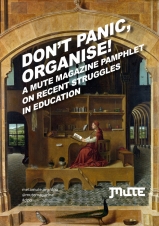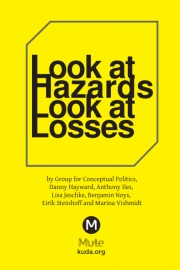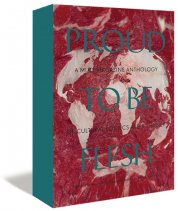Making Visible the Invisible: Information Visualization Through a Fine Art Lens
“In today’s digitally connected world, data is everywhere: in our phones, search queries, friendships, dating profiles, cars, food, reading habits. Almost everything we touch is part of a larger data set.” -Nick Bilton
By now, this statement is a cliché. Data is in use all around us–from academic institutions to corporations to the military–and its ubiquity has come quite naturally coupled with the greater societal shift towards science and technology. In the United States, a discussion about the disciplines known as STEM (science, technology, engineering, and mathematics) has been ongoing for some time, both within the education system and in relation to employment and immigration law.
“Big Data will replace ideas, paradigms, organizations and ways of thinking about the world.” -Steve Lohr
With this shift towards data, science, and the quantitative, a noticeable anxiety has also surfaced regarding the fate of the arts and humanities. Fears surrounding the decline in arts education (at all levels of schooling) have been continually brewing.
Data, Meet Art
Meanwhile, and perhaps as a response to these concerns, art and artists have slowly been incorporated into the mix of data science. In terms of data visualization, design and creativity have, of course, taken on greater importance as data has become more complex and abundant. Examples of the artistry in data visualization are not hard to come by, and this is a space frequently cited as one in which art can be pulled into this new, data-driven world.
Another way in which bridges have been built between the sphere of data science and the art world is through the increased commissioning of artworks by institutions that collect data, built around their available resources. For example, Jer Throp recently landed a spot as the New York Times data artist-in-residence, producing several works using the publication’s Article Search API.
The effort to inject art into the world of data has even resulted in the aestheticization of data related objects, such as Google’s artistic photographs of its data centers. However, this narrative would be incomplete if the examination only surrounded the ways in which art can be added to data, and the tendency is to forget that artists have been engaged with data collection and visualization long before the present-day obsession with it.
“Haven’t We Already Met?”
“The act of visualizing data—the information we hold as facts—is old. It is recognized in the way humans earnestly pressed shapes into clay and later printed letters in a row: an observance of regularity and repetition. It is also reflected in the way we first came to understand our environment, through diagramming the arc of the Sun as it appears and recedes upon the landscape: the celebration of a pattern.” -Kim Rees
The practice of information visualization involves observing phenomena or recognizing patterns, research and data collection, and finally translating the collected data into a visual format. Fine art practice in general frequently involves similar methods, and there are several artists whose work specifically illustrates these correlations. There are certainly many artists working today employing such techniques via digital means, but as these have more obvious connections to science, I will focus my discussion here to artists working through primarily analog channels.
“Art does not reproduce the visible; rather, it makes visible” -Paul Klee
German American artist Hans Haacke began showing an interest in systems and information in the late 1960s. His work Shapolsky et al. Manhatten Real Estate Holdings, A Real-time Social System, As of May 1, 1971 (1971) was based on public data that he collected at the New York Public Library surrounding the ownership and control of urban spaces in Manhattan. The piece took the form of photographs of the properties paired alongside the compiled facts in order to reveal the “empires of slum housing,” namely the power and economic imbalances present.

Hans Haacke, Shapolsky et al. Manhatten Real Estate Holdings, A Real-time Social System, As of May 1, 1971 (1971)
More recently, American artist Trevor Paglen has been documenting the enormous military machine in the US in order to expose information and patterns within it that are usually hidden from the eyes of ordinary civilians. Projects such as The Other Night Sky (2010-11) required Paglen to spend a good deal of time researching the astronomical positions of satellites and other space debris in order to photograph their tracers and illustrate their otherwise unnoticed presence.
In works such as Code Names (2007), Paglen has meticulously compiled a list of classified words and phrases used in US military programs. Its visualization–the starkly printed list installed spanning an entire gallery wall–is meant to evoke a feeling of being overwhelmed by the sheer number of terms.
Finally, and arguably the quintessential example of a fine artist who has employed data visualization methods prior to the rise of ‘big data’, was American artist Mark Lombardi. Lombardi spent years carefully collecting facts from mainstream publications such as the New York Times and Washington Post on approximately 14,000 index cards. He then used this data in order to create large-scale pencil drawings mapping the connections between the documented entities in order to create highly elaborate flow charts revealing hidden financial and political ties. These served to visualize conspiracies, most notably by connecting the Bush and Bin Laden families in his work George W. Bush, Harken Energy and Jackson Stephens, ca 1979–90 (1999) (shown above as the header image of this post). Lombardi’s complex structures and delicate graphite lines are not organically beautiful, but also function as pure information visualization.
The work of these artists illustrates that the central concerns of information visualization have operated as artistic concerns even prior to the present day, and even through analog modes of production (either data collection, data visualization, or both). While it is crucial to remember the importance of the integration of art as we continue to usher in a more technologically-centered era, let us not underestimate the ability of art and artists to address data-related concerns through their own language and using their own devices, and not forget that they have actually been at this for quite some time.
Mute Books Orders
For Mute Books distribution contact Anagram Books
contact@anagrambooks.com
For online purchases visit anagrambooks.com









